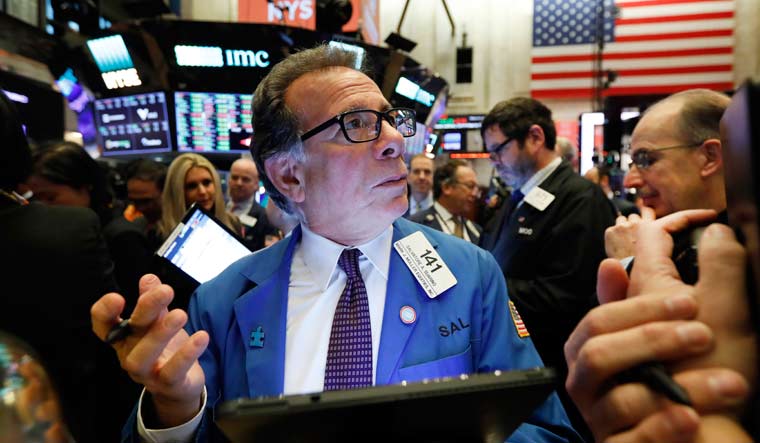The US and China have reached a historic agreement on a phase one trade deal, US President Donald Trump announced on Friday, in a big breakthrough in the over 18-month-long bruising trade war between the world's two largest economies that has threatened to roil the global economy.
The phase one of the trade deal requires structural reforms and other changes to China's economic and trade regime in the areas of intellectual property, technology transfer, agriculture, financial services, and currency and foreign exchange.
It also includes a commitment by China that it will make substantial additional purchases of US goods and services in the coming years.
Importantly, the agreement establishes a strong dispute resolution system that ensures prompt and effective implementation and enforcement.
As a result, the United States has agreed to modify its Section 301 tariff actions in a significant way.
"We have agreed to a very large Phase One Deal with China. They have agreed to many structural changes and massive purchases of agricultural product, energy, and manufactured goods, plus much more," Trump announced in a series of tweets on Friday.
Chinese Vice Commerce Minister Wang Shouwen confirmed that a breakthrough in trade negotiations had been reached for a phase one deal.
Wang said the agreement covered a wide range of issues, including intellectual property protection, technology transfer, purchase of agricultural products and expanding trade.
President Trump said that the 25 per cent tariffs will remain as is with 7.5 per cent put on much of the remainder.
"Penalty tariffs set for December 15th will not be charged because of the fact that we made the deal," he said.
"We will begin negotiations on the Phase Two Deal immediately, rather than waiting until after the 2020 Election. This is an amazing deal for all. Thank you!" Trump said.
According to US Trade Representatives Robert Lighthizer, the phase one agreement achieves meaningful, fully-enforceable structural changes and begins re-balancing the US-China trade relationship.
Describing this as another significant step forward in advancing Trump's economic agenda, Treasury Secretary Steven Mnuchin said the landmark agreement marked critical progress toward a more balanced trade relationship and a more level playing field for American workers and companies.
The US first imposed tariffs on imports from China based on the findings of the Section 301 investigation on China's acts, policies, and practices related to technology transfer, intellectual property, and innovation.
America will be maintaining 25 per cent tariffs on approximately USD 250 billion of Chinese imports, along with 7.5 per cent tariffs on approximately USD 120 billion of Chinese imports, USTR said.
Welcoming the announcement, the US Chamber of Commerce described the deal as a very positive development.
Chambers head of International Affairs Myron Brilliant said this agreement created greater certainty for American businesses, after months of uncertainty, as they plan for the year ahead.
When fully implemented in both letter and spirit, China's commitments have the potential to create a better environment for US businesses exporting to and investing in China, and begin the process of rebalancing the US-China economic relationship Brilliant said.
Chambers said that the announcement laid the foundation for a phase II deal.
Phase II of the negotiations should address consequential and challenging structural issues that impact American businesses ability to compete on the global economic stage. Those issues include China's massive subsidies, digital and data discrimination, and a range of outstanding forced technology transfer concerns, he said.
Liao Min, deputy director of the office of China's Central Commission for Financial and Economic Affairs said as the US agreed to reduce parts of tariffs imposed on Chinese products, China will consider not be introducing tariffs on American products scheduled on December 15.
"China hopes the US will fulfil its commitment. Removing tariffs is the core concern of China," he said.
Both sides have reached a consensus that the US side will fulfil its commitments to phase out its additional tariffs on Chinese products, so as to achieve a switch from hiking to cutting additional tariffs, state-run Xinhua news agency said, quoting an official statement.
The agreement is generally in line with the main direction of China's deepening reform and opening up as well as the internal needs for advancing the high-quality economic development, the statement said.
The agreement will help the two countries enhance economic and trade cooperation, effectively manage, control and resolve differences, and promote the steady development of bilateral economic and trade relations, it said.
China and the US have been locked in a longstanding trade war that has threatened to roil the global economy.
The US has imposed tariffs on $250 billion of Chinese goods, having accused the country of unfair trade practices. Beijing hit back with duties on $110 billion of US goods, blaming the US for starting "the largest trade war in economic history".
The IMF has warned that a full-blown trade war would weaken the global economy.


